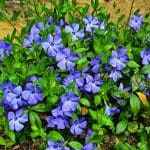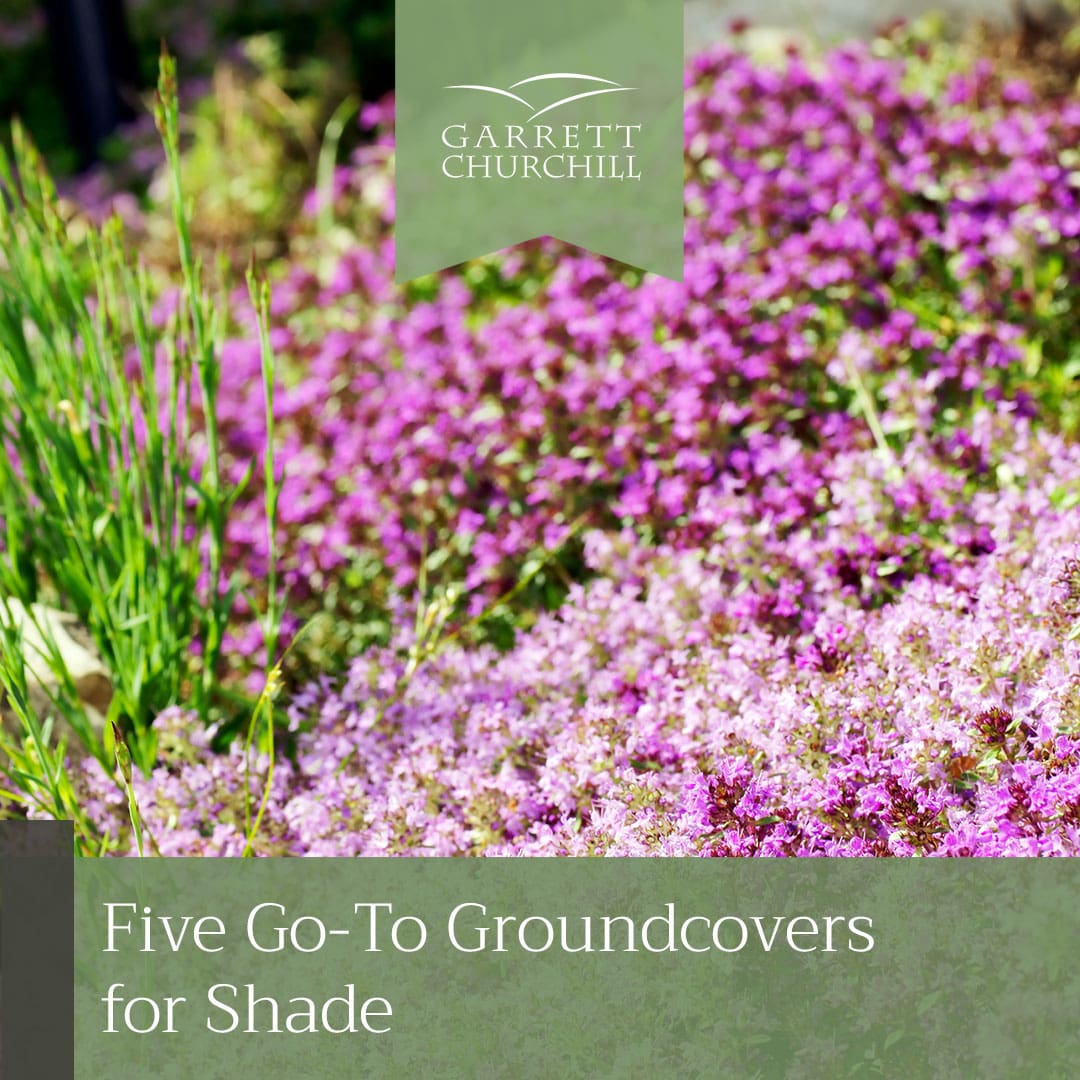Five Go-To Groundcovers for Shade
Groundcovers are low-maintenance, low-growing plants that provide the perfect addition to areas where traditional grass is challenging to grow or maintain, like steep slopes or shaded areas. In addition to making your garden easy on the eyes, groundcovers can block weeds from pushing through and prevent soil erosion.
What Is a Groundcover?
Groundcovers are planted to cover up exposed soil, filling gardens with color while making it more difficult for weeds to germinate. Once established, groundcovers restrict soil and available light, displace invasive weed growth. This is usually done in tandem with mulch and can save gardeners a lot of time by reducing the need for weeding.
When purchasing groundcovers, always research their light, soil, and water preferences to ensure they can thrive in their intended location. Placement is also important as planting groundcovers too close to other plants or trees can restrict their nutrients and water intake.
To help you select, purchase, and place the right plants in shady areas of your yard, read on for five of our favorite go-to groundcovers.
 1. Pachysandra
1. Pachysandra
This popular evergreen perennial has shiny leaves and fragrant, delicate white flowers that bloom in early spring. Originally native to Japan and China, Pachysandra is a member of the boxwood family.
Pachysandra can grow in partial to full shade and often reaches heights up to six inches tall. This fast-growing, lush groundcover can be planted across much of the country in hardiness zones 4 to 9.
Pachysandra is known for being a tough, resilient plant that tolerates winter very well, with a notable yellow color change in the colder months. Place Pachysandra under deciduous or evergreen trees to keep gardens and borders looking tidy year-round.
2. Golden Star
Chrysogonum virginianum, or golden star, is a perennial groundcover that forms in dense clumps. It can grow beautiful golden flowers that bloom in the spring and sometimes autumn. The flowers provide nectar to pollinators, such as bees, but are not appetizing to mammals.
Golden star grows very quickly and is rather adept at spreading out, making it an ideal weed suppressant. However, you may have to take extra care to ensure its spread doesn’t become too unruly. As far as habitat is concerned, golden star does best in moist soil in zones 5-9 and is usually found in rocky woodland areas.

3. Vinca Minor
More commonly known as periwinkle, vinca minor is a popular groundcover perfect for the shade in hardiness zones 4-9. It is part of the Apocynaceae family. In cooler regions, it returns yearly as an annual, and its flowers can be a combination of blue, purple, white, and lavender. They are usually planted in early spring and have a medium growth rate.
As far as planting goes, you should ideally plant vinca minor in early spring. However, you can plant it during autumn as well. Be careful if you have children or pets, as certain vinca minor varieties are known for toxic properties.
4. Barren Strawberry
If you’re looking for a versatile groundcover, barren strawberry might be a good option for your yard. Known as Waldsteinia fragarioides, this plant is one of the best groundcovers for shady areas. Unlike its relative, the traditional garden strawberry, the barren strawberry does not produce fruit (hence the name). However, it does produce beautiful yellow flowers.
Barren strawberry grows in hardiness zones 4-9 in a light acidity soil. It is best suited for full shade as its aggressive growth in more sunny areas will necessitate containment.

5. Wild Ginger
Asarum canadense, better known as wild ginger, is an ideal groundcover for shady spaces. Its flowers usually bloom in the early summer and grow underneath its leaves. Contrary to its name, wild ginger is not related to traditional ginger and is slightly toxic, so refrain from eating it.
Wild ginger is perfect for full or partial shade in zones 4-8 but will not do well if planted in direct sunlight. Like barren strawberry, it does well in mildly acidic soil and a moist environment.
Landscaping for Your Outdoor Enjoyment
Looking to spend more time outdoors this season? Regardless of the sun exposure your yard receives, our team can address your design, build, and maintenance needs. Contact us for a quote today!

 1. Pachysandra
1. Pachysandra
